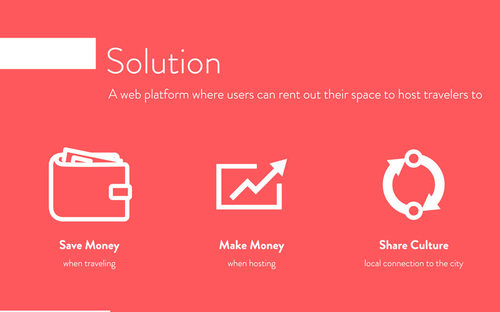Getting accepted into an accelerator like Y Combinator or Techstars is a major step forward for any startup. Given the rising number of accelerators and dollars invested into early0stage companies, getting into any accelerator is beneficial for a startup.
But how does a founder get their company into an accelerator, and when is the right time to apply?
This article “applying to an accelerator? Read this first” was originally written by Joe Garza and appeared on Founder Institute. It has been edited and re-published with permission.
While it is entirely possible for any startup to get accepted into an accelerator, there are numerous factors that need to be thought about before a founder decides to submit their company for consideration.
Hopefully, our guide will help you decide applying to an accelerator is right for you, as well as what you can do to make sure your startup is accelerator-ready.
What is the right option for you?
While there are certainly several similarities between incubators, accelerators, and other startup programs, the differences between them must be considered before applying to any of them.
To help you make the right choice for your company, here are some of the main qualities to consider.
Seed accelerators
Seed Accelerators are designed to boost, or accelerate, the growth of a company that is already operating, providing seed funding and mentorship over a 3 to 6 month period. In addition, accelerators only accept a small number of startups in every given cohort and require equity in each company accepted.
Incubators
Incubators are designed primarily for companies that are very early stage, or founders who don’t have an operating company yet and help them validate their idea. Incubators typically offer mentorship and connections to investors, but usually, don’t have a set duration and don’t require equity from the companies accepted.
Other startup programs
There many other startup programs for nearly every stage of launching a startup. For example, the Founder Institute, an idea-stage startup launch program with a comprehensive step-by-step curriculum that helps founders transition from employee to entrepreneur, test their startup ideas, build a team, get their first customers, raise funding, and more.
Why should you apply to an accelerator?
Accelerators can significantly help grow the size and value of your company in a short period of time and can be an ideal gateway to venture capital, particularly for companies where the founders are new to the startup ecosystem.
In addition to capital which is the life-blood of any company, accelerators can help drive early-stage companies forward by providing:
-
Network: access to expertise and influential people in the industry.
-
Strategic Advice: “insider” advice and perspective on entrepreneurship.
-
Validation: immediate validation and “startup stamp of approval”.
Which accelerator should you apply to?
There are a ton of incubators and accelerators that you can apply to, but it’s worth noting that they’re not all created equal. Your will have to do some homework and figure which one is best for you and your particular industry.
In particular, you should consider whether the location of the incubator is ideal for your company. You should also strictly evaluate the track record of the accelerator.
Is your startup ready for an accelerator?
Team
“For most startups at this stage, the best predictor of success is the founders. The most important parts of the application are the questions about the founders’ backgrounds and the most impressive things they’ve done. We’re looking for evidence that the founders are smart, effective, and determined.” – Sam Altman (President of Y Combinator)
The primary determinant of the success of an early stage startup is the founding team. You will face a number of challenges as you build out your companies; your product may change, target market may change, but the strength of your founding team is key to making it through the early growing pains. Accelerators will evaluate your team’s potential to work through a variety of conditions.
Smart
Accelerators want to know that your team is knowledgeable in the relevant fields of your industry, can learn new things quickly, can process information and make smart decisions. One of the most important abilities for founders is to learn new skills quickly.
Technical
Similar to most other investors, accelerators need to be convinced that you can build what you say you can. The goal of demo day is to enhance your ability to raise a seed round by creating investor demand. You only have 90 days before demo day.
Your team must be able to build and iterate on your product quickly to make the necessary progress that accelerators expect. It’s very difficult if not impossible for your business to progress at this blistering pace while outsourcing your product development.
Effective
Your team must be effective at convincing people to join your risky startup, to try your broken product, to launch a product on budget etc. You are faced with a series of never-ending challenges while building your company. Similar to other early investors, accelerators need to be convinced that you have the ability to effectively navigate all the challenges your company will face.
Similar to other early investors, accelerators need to be convinced that you have the ability to effectively navigate all the challenges your company will face.
Determined
“If you imagine someone with 100% determination and 100% intelligence you can discard a lot of intelligence before they stop succeeding. But if you stop discarding determination, you very quickly get an ineffectual and perpetual grad student.” – Paul Graham
For startups, persistence is the name of the game. Because persistence is often the difference between success and failure, accelerators use it as a leading indicator for making investment decisions. In your application and interviews, you must show examples of how you were persistent on previous projects.
Example:
Below is the team slide, as seen in The Team Slide: You Had Me At Hello blog post by Josh Hannah, from Linkedin’s Series B pitch deck. While most companies applying to accelerators don’t have the experience of the team members listed here, this will at least give you an example of what you should strive for when building your team and how to present them in a pitch deck.

For more information on preparing your team for an accelerator, check out the blog post, “Accelerator application: How we got into 500 Startups“, by Jose ‘Caya’ Cayasso.
Idea
The best startup ideas are outliers. However, you need to convince accelerators that you are aware of the obstacles. It’s a bad sign if your interviewers see obstacles to your ideas to you haven’t thought of because it’s your idea after all. You’ve been thinking about it for a while.
Example:
Below is the solution slide, as seen in the Airbnb pitch deck: teardown and redesign by Jose ‘Caya’ Cayasso, from Airbnb’s pitch deck. Besides being an excellent way to describe a startup’s offering, it’s also a great model for how founders should think of their startup idea. Simple, effective, monetizable.

For more information on ensuring your startup idea is ready to present to accelerators, check out the blog post, 5 Music Lessons from a Silicon Valley Tech Accelerator, by Davorin Kuchan.
Traction
Accelerators are a form of Venture Capital. They accept companies that fit that model of investments. In other words, they look for growth-oriented technology companies.
Product & traction
You will need a live product for your application to get considered by an accelerator. You must release your product and you need to get market validation before you apply.
Traction is defined as progress over time. Your traction needs to be proportional to the amount of time the product has been live. There is a big difference in how your traction is evaluated between being live for 3 months vs 3 years. You also need a few months of market validation that shows you can acquire users or customers.
Some startups will need more traction than others. If you are going against entrenched players in an established market you will need to show more traction. You must prove that people are picking you over the competition.
Hardware
Hardware products require more resources and are more difficult to scale. However, you still must show market validation and a working prototype at a minimum. The earlier you are, the more convincing you will need to be. It’s also expected that your team has a background in software & hardware.
Market
Venture Capitalists expect your business to have the potential to become a multi- billion dollars publicly traded company in 6-10 years if everything goes well.
It’s impossible for your company to achieve this level of growth unless you are attacking a massive multi-billion dollar market or you are creating a market that has the potential to grow to 100s of billions of dollars.
The accelerator model is optimized to give your company the best chance to raise follow-on capital. This capital will come from seed funds or angel investors that expect you to raise additional capital from venture capitalists.
Example:
Below is the traction slide, as seen in How to present your traction slide in your overview deck by Mukund Mohan, from Buffer’s pitch deck. Again, while many startups applying to accelerators may not have as much traction as listed below, it’s still a great example of the kinds of numbers startups should provide in their accelerator applications.

For more information on the kinds of traction you need to get into an accelerator, check out the blog post, 7 Unexpected lessons I learned at the muru-D accelerator, by Andrea Martins.
Not ready to apply to an accelerator yet?
If your startup doesn’t a strong team, a viable idea, and plenty of traction, it’s not ready to apply to an accelerator yet. Because even if your startup is lacking just one of these factors, your chances of getting into an accelerator program are very slim.
However, if your startup isn’t accelerator-ready yet, don’t worry, because we have plenty of resources below to help you get your startup in the best shape possible.
Team
-
What You Need for the Perfect Startup Team – In this syndicated blog post, lean startup coach and advisorTristan Kromer shares his insights on what comprises the complete startup team and what startups should look for in team members.
-
The Startup Glossary: Finding a Team and Co-Founders – The startup world is filled with fancy terms that every entrepreneur needs to know. To help, we’ve created a Startup Glossary with all of the most important startup-related terms, continuing with building a team and finding co-founders.
Idea
-
An Expert Guide to Developing the Perfect Startup Idea – Finding a lasting and lucrative startup idea does not need to be left to chance. In fact, there are plenty of ways that founders can discover and develop their startup ideas, and we’ve collected just a few of them here for your benefit.
-
5 Essential Steps for Developing a Winning Startup Idea – In this 17-minute video, Adeo Ressi, CEO, and Co-Founder of the Founder Institute, presents a five-step process to develop a great startup idea. The premise is that great ideas are raised rather than born.
Traction
-
How to Get 10K Users Within 4 Weeks of Launching Your Product – If you’re ready to launch your product and want to get the most from your release, this guide will help you get started, filled with insights from someone who managed to attract over 10,000 users in just four weeks of launching their product – WITHOUT a marketing plan or budget.
-
Marketing Growth Tactics You Need To Try – In this installment of Roundtable Discussions, members from our network share their hacks on conducting market research, attracting customers, and processes for gathering user feedback.
Video
As part of your application, accelerators often will require a video. The purpose of this video is for the evaluators to get an idea of how your team interacts. Therefore, this video needs to feel natural and unscripted. It should be 100% the founder’s talking about the company.
Do not include product screenshots, music or video effects. Ideally, you should be speaking spontaneously as if you were talking with a friend or a colleague. Also, be try to keep your video to about one minute long or less. I
f you can’t attract someone’s attention with your product in 60 seconds or less, your product needs more work.
Meet The Co-Founders from NMRKT on Vimeo.
If your startup isn’t quite ready to submit to an accelerator and needs some expert mentorship, the Founder Institute is currently accepting applications. Apply today!
For more business tips, check our entrepreneurship section and subscribe to our weekly newsletters.






